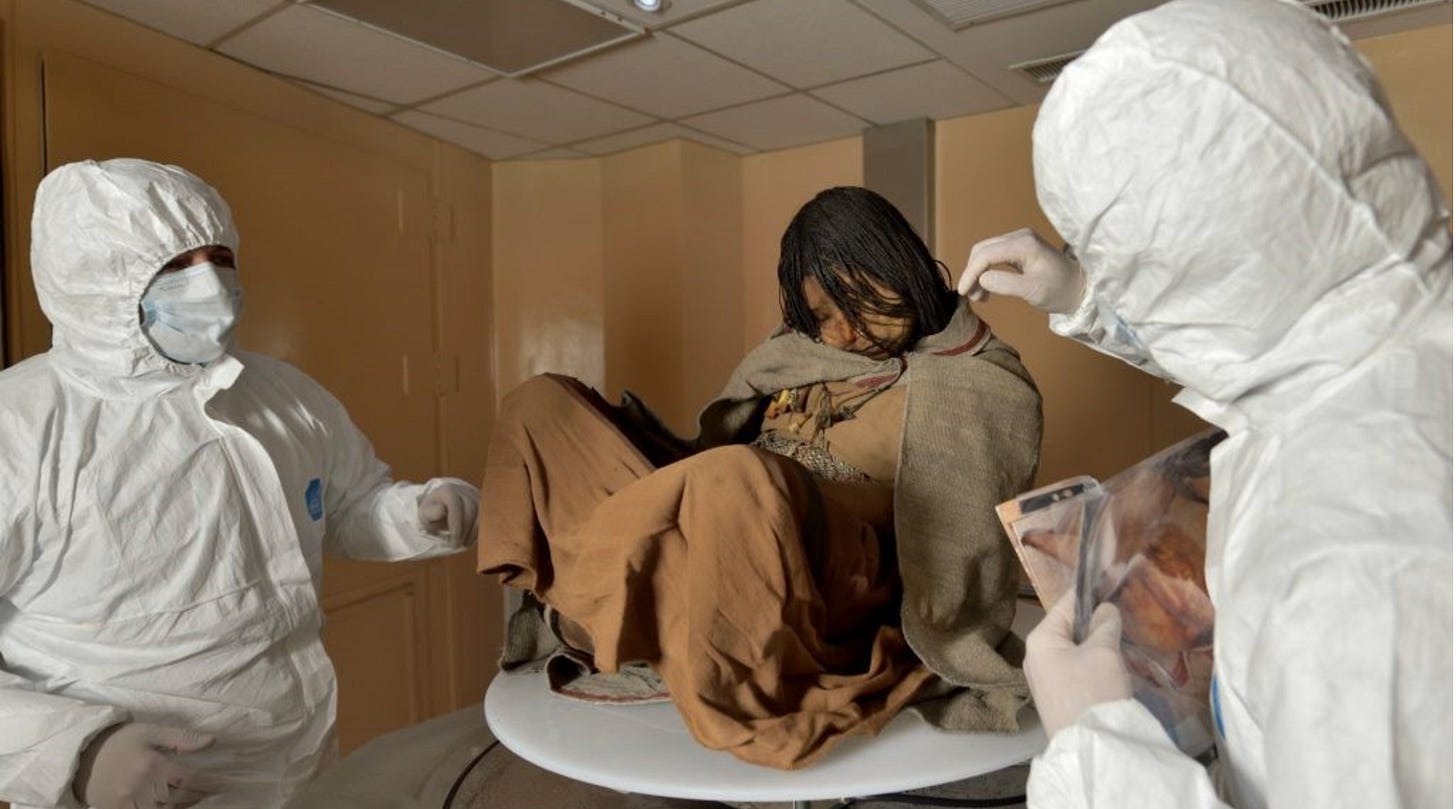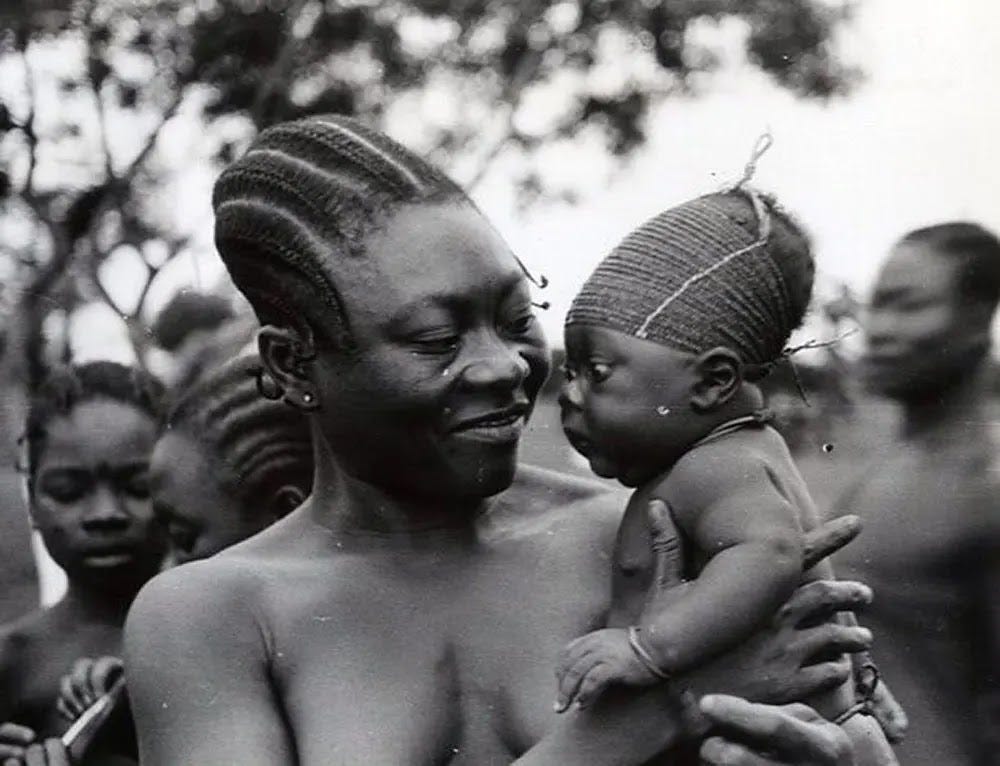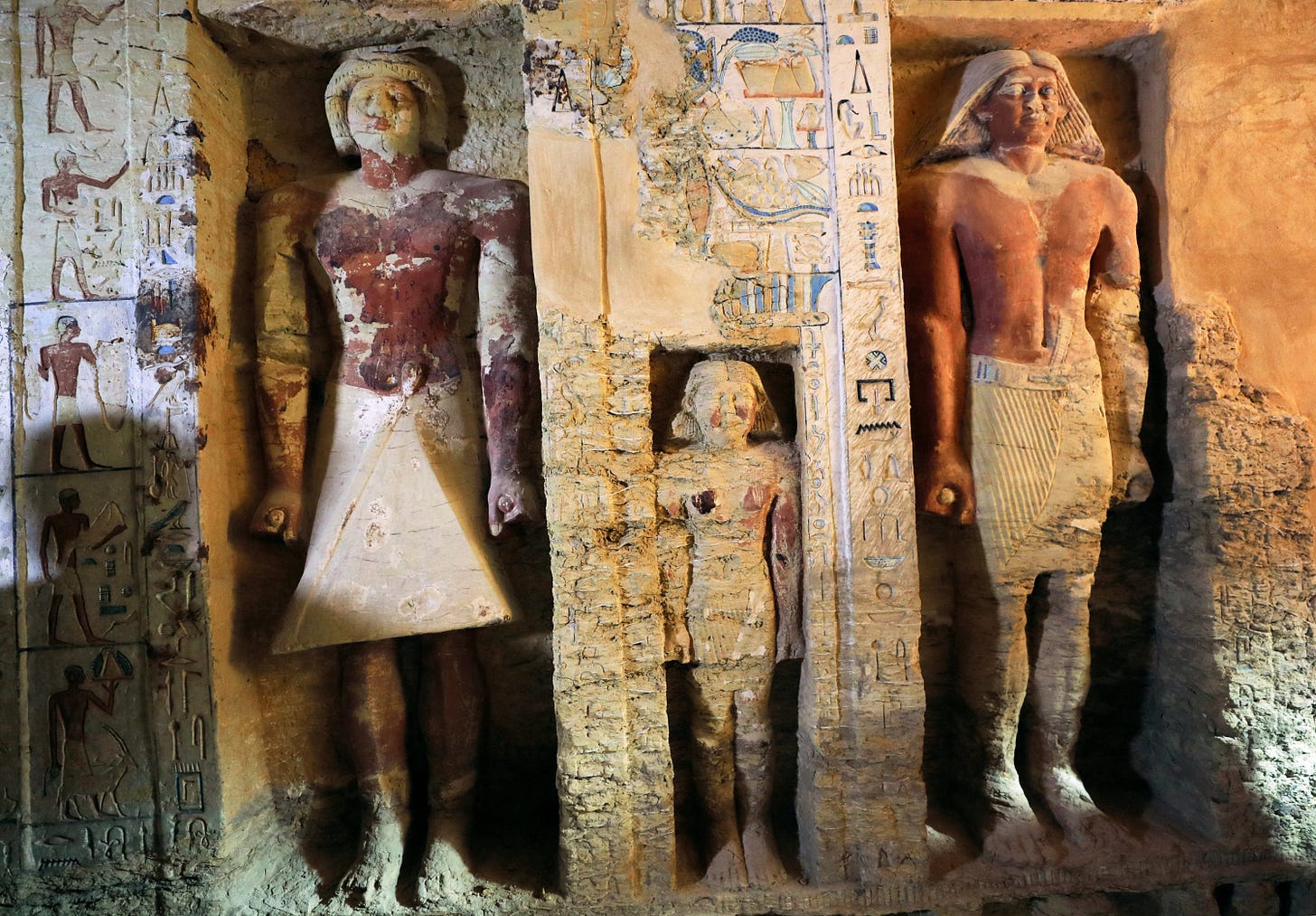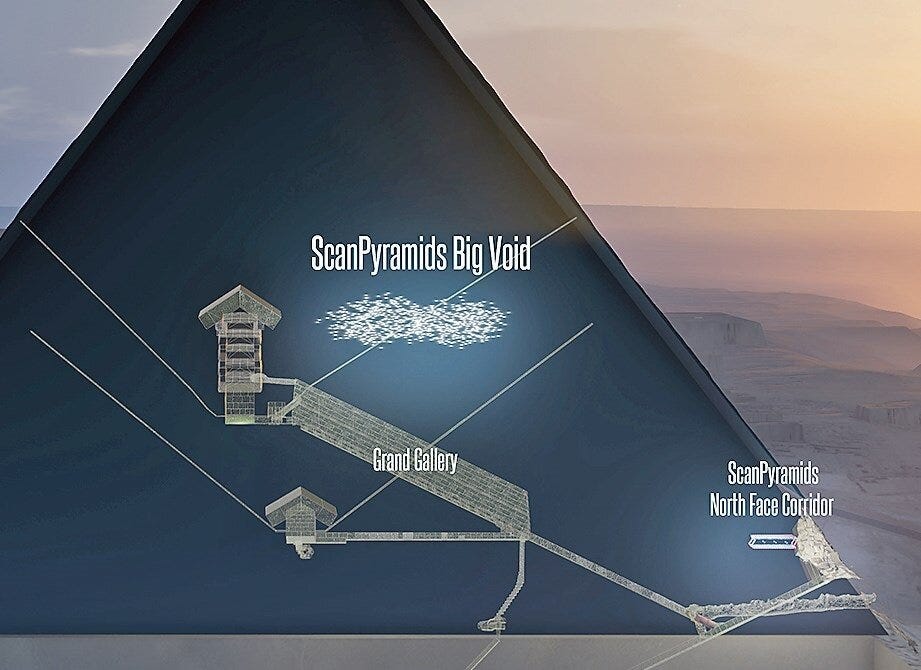
Dear Classical Wisdom Reader,
Mercifully the children were drugged before they were left to die. Aged 6, 7, and 15, they were given a strong dose of Coca and maize based alcohol, which allowed the girls to die in their sleep after they were sealed in the grave. In fact, the oldest one, the virgin dubbed la doncella (the maiden), has the highest concentration of coca ever found in Andean human remains.
Tragically, the boy (aged 7) did struggle... and most likely suffocated.
Today you can see the Children of Llullaillaco in the high altitude museum in Salta, one of the most northern states of Argentina, high in the Andes. Despite one of them being struck by lightning, these three children, who were ritually sacrificed 500 years ago, are the most immaculate preserved mummies we have.
Sealed at 6,739 m (22,110 ft) high in the mountains, they froze before any decomposition took place. There is still frozen blood in their hearts, their organs are perfectly preserved, even the hairs on their arms are still visible. And now, you can see them, peer deep into past centuries, in specially made cases.
However, this exhibition does not come without controversy. Like just about anything these days, there are large debates on either side of the discussion about where these children should be.
Scientifically, anthropologically, historically they are absolutely fascinating. They allow a window not only into the more ‘modern’ past, but in many ways into an ancient past we can barely conceive. For instance, two of the children display cranial elongation. I’ll admit, when I first read this, I immediately went to google and was shocked by both the deeply steeped history of this activity, as well as its universality. Apparently cultures have been purposefully elongating infants' heads - for who knows why - for millenia.
Herodotus in 400 BC was the first to record it, describing a group known as the Macrocephali or Long-heads, who were named for their practice of cranial modification.
It’s quite remarkable to see this ancient practice... along with, tragically, the world of sacrifice. It’s something we know happened in the ancient world, all over. But reading about it in the textbooks offers little compensation for those who died. It’s rare that we get the humbling, horrible, humanizing experience of looking the sacrificed in the face.
But just because we learn something from them, doesn’t mean taking them out in the first place was right... does it?
For one thing, descendants of these children still exist. And they certainly don’t like their sacred ritual on display. There are movements to take back the children of Llullaillaco... and return them to their resting spot. Rogelio Guanuco, the leader of the Indigenous Association of Argentina (AIRA), called the display "a violation of our loved ones", saying that, "Llullaillaco continues to be sacred for us. They should never have profaned that sanctuary, and they should not put our children on exhibition as if in a circus."
Not all indigenous people agree though. In 2004, the Third World Congress of the Quechua Language, which brought together 300 representatives from Andean countries, discussed the children of Llullaillaco. They approved of the museum, declaring, “the diffusion of such investigations for recognizing the greatness and the evolution of our ancestors from their origins to the present day."
Either way, it is the dead that is being unearthed... taken away from their final resting place... and we all know it’s not only high altitude gravesites that are being excavated.
Indeed, recent explorations at Egypt’s pyramid sites have yielded stunning discoveries. At Saqqara, archaeologists unearthed a trove of sealed coffins, statues, and mummified animals, including a lion cub, dating back over 2,500 years. And yet it is not those hundred vividly painted coffins that have been making the headlines and crossing into conversations...
Initially in 2017, scientists using muon tomography, a non-invasive scanning technique that tracks cosmic particles, discovered a massive hidden void within the Great Pyramid, the largest and oldest of Egypt’s pyramids, which was built for Pharaoh Khufu around 2560 BC. The void was estimated to be at least 98 feet (30 meters) long and it sits above the Grand Gallery, with no known access point.
Then in March 2023, further scans by the ScanPyramids Project, an international team of researchers and engineers, revealed yet another chamber, this time a sealed corridor nearly 30 feet long, located just behind the pyramid’s north face. The passage is believed to be a relieving structure, designed to reduce stress on the pyramid’s internal architecture, but its precise purpose remains unclear.
What’s especially tantalizing is that both voids were previously undocumented in any historical texts or construction records. The serious question among Egyptologists has been the purpose of these chambers... Could these hidden spaces have had ritual or symbolic functions?
The theories answering this range from the banal to the absolutely insane, covering all hours of the history channel... The reality however, will never be found out without actually going in and excavating...but should that happen?
From the many tumuli exposed to the elements the world over to the more recent warriors excavated at the Palace of Nestor... at what point are we disrupting those who have given up the ghost? As lovers of history and archeology it’s always worthwhile to take a step back and ask if our actions and passions are ethical...
Essentially, is it okay to dig up the dead? When does archeology become grave-robbing?
As always, you can comment below, write to me at anya@Classicalwisdom.com or reply to this email.
All the best,
Anya Leonard
Founder and Director
Classical Wisdom
P.S. Were the ancient Greeks a MIRACLE? And if so, why? What really drove history to evolve in the West as it did? And what is the importance of disagreement... and the ego?
This month’s Podcast with Professors is with Reviel Netz, the Patrick Suppes Professor of Greek Mathematics and Astronomy in the Department of Classics at Stanford University. He is the author of many celebrated books, including the bestselling The Archimedes Codex: Revealing the Secret of the World's Greatest Palimpsest as well as his most recent, Why the Ancient Greeks Matter: The Problematic Miracle that was Greece.
We discuss (and trial) the need for tension and dissent...
MEMBERS: Watch your inbox on Wednesday for this newest podcast. And if you aren’t a member already, make sure to subscribe before then to enjoy this (as well as other) discussions!
Más info en https://ift.tt/w76yCVK / Tfno. & WA 607725547 Centro MENADEL (Frasco Martín) Psicología Clínica y Tradicional en Mijas. #Menadel #Psicología #Clínica #Tradicional #MijasPueblo
*No suscribimos necesariamente las opiniones o artículos aquí compartidos. No todo es lo que parece.




No hay comentarios:
Publicar un comentario